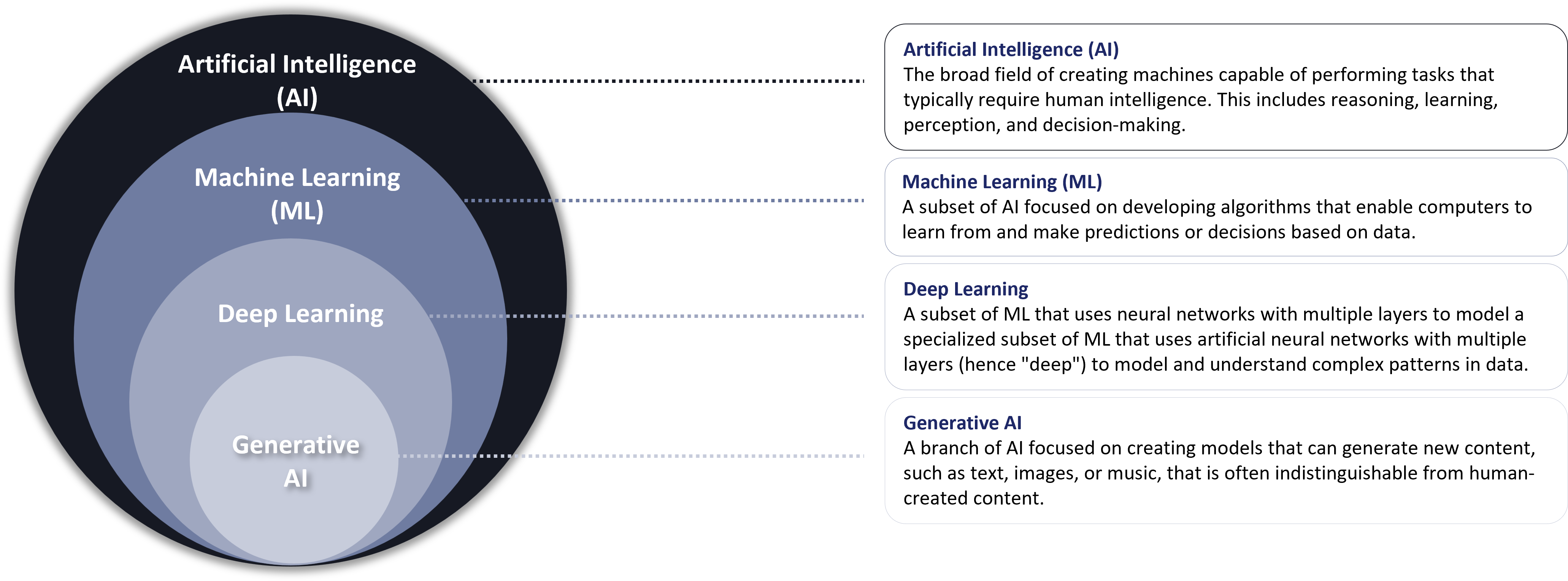by HPA Senior Advisors Ed Wiley and Ujjwal Sinha
In today’s business landscape with new transformative opportunities seemingly emerging daily, artificial intelligence (AI) has transitioned from a “nice-to-have” to a critical component of competitive strategy. Like e-commerce in the late 90s, AI will change the business landscape – with early adopters best positioned to succeed. As seasoned consultants who have guided numerous organizations through AI transformations, we’ve observed a common challenge: while executives recognize the importance of AI, many struggle to develop and implement a cohesive AI strategy. This article outlines a practical approach to crafting an AI strategy that drives tangible business value.
Surge in AI Popularity
Machine Learning (ML) has seen applications in large enterprises since the turn of the century; it has risen in popularity over the last dozen years or so as data has increasingly become a key enterprise asset. Numerous companies have leveraged ML- and AI-based initiatives to improve their top and bottom lines. Even your children are familiar with AI, as it became a household term a couple of years ago with the release of ChatGPT and other large language models (LLMs). Led by ChatGPT, these large language models represented the first applications with a simple and intuitive interface, opening the door to the everyday use of AI by the widespread public. Everyone from middle school students to professors to C-suite leaders of Fortune 500 companies took notice of AI’s power and potential.
These days, AI in the enterprise encompasses both ML and NLP. It’s not just large enterprises, but even smaller businesses that are using these tools to evolve and remain competitive in the rapidly changing marketplace. While some functions have been quicker to embrace the potential (e.g., customer service), all business leaders should be thinking about AI.
Below is a hierarchical diagram showing relationships among Artificial Intelligence (AI), Machine Learning (ML), Deep Learning, and Generative AI.

The Urgency of AI Adoption
The imperative for AI integration is clear. Industry leaders across sectors are leveraging AI to transform their operations, enhance customer experiences, and create new revenue streams. For instance, Apple is investing significant resources to integrate AI into its product ecosystem, while companies like Nvidia are experiencing unprecedented growth due to AI-driven demand. The underlying message is clear, and not unlike early e-com adoption: organizations that delay risk falling behind.
However, it’s not just about keeping up with competitors. AI presents opportunities to fundamentally reimagine business processes and customer interactions. For example, a global chip manufacturer we worked with recently deployed AI to optimize their complex supply chain, involving over 100 players. By enhancing their demand forecasting capabilities, they significantly improved inventory management, reduced volatility in their supply chain, and strengthened their cost position. While they could have continued with their status quo tools (e.g., worksheets), they instead enhanced their competitive advantage for the next decade.
Framing Your AI Strategy
When approaching AI strategy, we recommend concentrating on three key areas:
- Margin Enhancement: Look for opportunities where AI can either increase revenues or reduce costs. For a retail client, we implemented AI-driven dynamic pricing, which boosted margins by 3% within the first quarter. By analyzing customer behavior and market trends in real time, AI enabled them to optimize pricing strategies, directly impacting their bottom line.
- Operational Efficiency: Identify processes that are ripe for AI-driven automation or optimization. A financial services firm we advised used NLP to automate document processing, reducing processing time by 60% and freeing up valuable human resources.
- Strategic New Value Creation: Explore how AI can enable new products, services, or business models. A healthcare provider leveraged AI to develop a predictive patient care platform, opening an entirely new revenue stream and setting them apart in a competitive market.
The key is to align AI initiatives with your organization’s strategic priorities and unique strengths. Start by assessing your data assets, operational processes, and core competencies, then identify where AI can provide the most significant impact.
Implementing Your AI Strategy
Here is an implementation framework we use with our clients:

To demonstrate that at HPA, “We eat our own cooking”, we are using this approach internally to improve our outbound marketing efforts. AI allows us to deliver tailored marketing materials to potential clients, based on their specific business needs. We are testing, learning, and using “what didn’t work” to refine future iterations (i.e., even if actual results are less than predicted, it’s still valuable data).
Conclusion
Crafting an effective AI strategy is no longer optional–it’s a business imperative. By focusing on tangible business outcomes, aligning AI initiatives with strategic priorities, and following a structured implementation approach, organizations can harness the transformative power of AI to drive sustainable competitive advantage.
The journey may seem daunting, but with the right approach and expertise, the potential rewards are immense. As AI continues to evolve, so must our strategies for leveraging it. Many companies that chose not to invest in e-commerce were disintermediated by the early 2000s. Take a lesson from them–the time to adopt AI is now. Let us help you navigate this transformative journey that positions your organization at the forefront of innovation.
For more insights on AI adoption and how AI is transforming the business landscape, read Ed Wiley’s other articles: “Are You Ready to Transform Your Firm with AI?” and “Generative AI and the Productivity Supercharge”.
